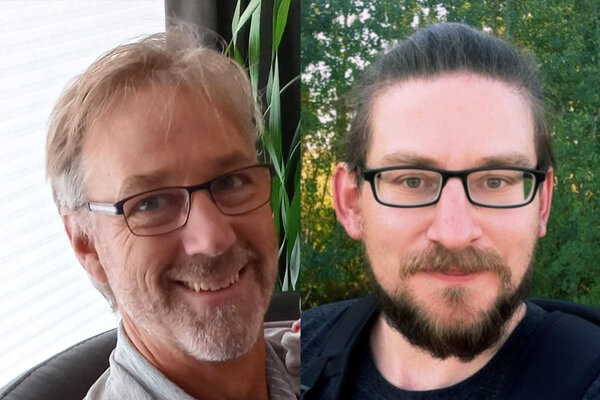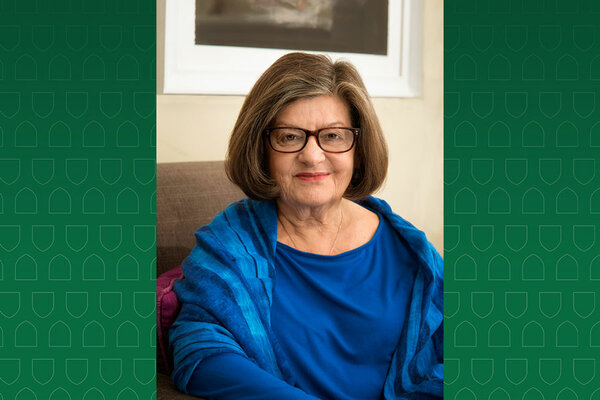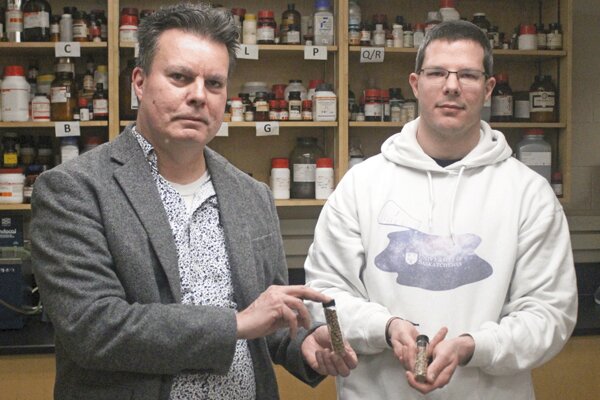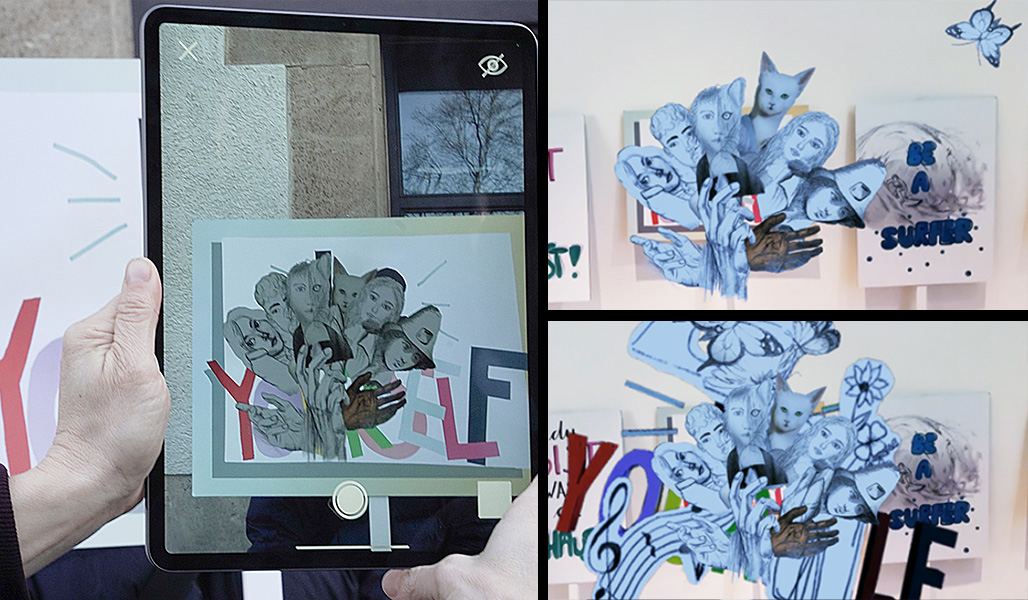
International collaboration brings artwork to life with augmented reality
shARed spaces team explores the possibilities of a developing technology and its place in digital art
By Kristen McEwen
The shARed spaces team at the University of Saskatchewan (USask) help make artwork leap off the page–literally.
Earlier this year, a classroom of Grade 8 students in Germany took their artwork to the streets on picket signs with the project, AR!!Action. The students walked around, allowing the public the opportunity to see artwork come to life through augmented reality (AR).
This experience was possible due to shARed spaces principal investigator and Art and Art History associate professor Lisa Birke, and her team, located thousands of kilometres and several time zones away at USask.
600800jpg
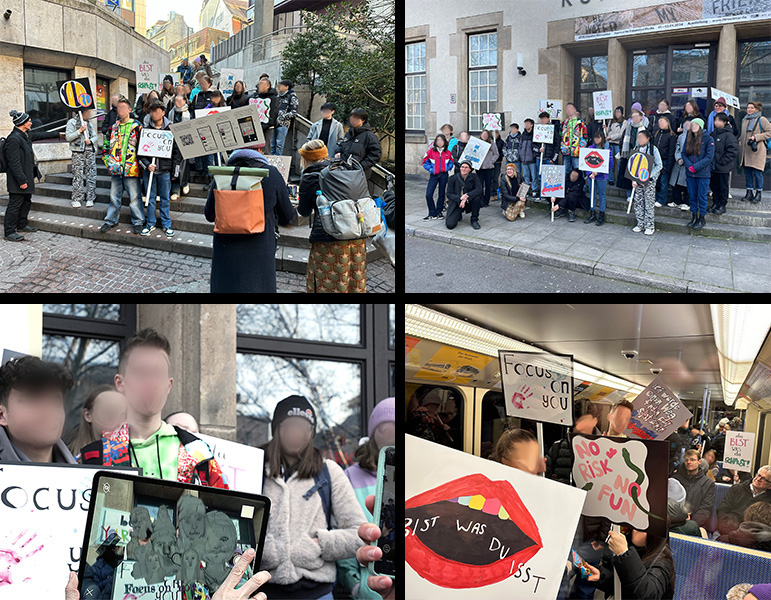
“I think AR is going to be ubiquitous with our space very, very soon,” Birke said. “It’s also a way of introducing new, and up and coming artists, to a broad international audience no matter where one (creator or viewer) is located.”
She added that an estimated 100 million people would be using AR in the United States and Canada this year.
“For the students, usually you only conceptualize drawings existing on the paper in front of you,” Birke said. “But being able to animate them in this way and having (the art) break through that limited field of view, allows it to become a part of any place or situation, exponentially expanding its potentials.”
Birke became connected with the Grade 8 classroom through the Stuttgarter Filmwinter Festival of Expanded Media to which she had submitted work. The submission put her in contact with a curator who took an interest in her work after listening to a podcast episode of, “Experimental Film podcast with Ken Hess,” which mentioned the work she was doing with shARed spaces and augmented reality.
Using augmented reality, shARed spaces is a project that examines how art and digital tools can create unique experiences. The research project is a collaboration with the University of Saskatchewan Art Galleries & Collection, which started in 2019 to explore design methodology, user research, development processes, guides for IP and copyright and tutorials. Artworks and projects are available on the shARed spaces mobile app.
Work from shARed spaces projects have been on display at events such as Nuit Blanche Eve and other cultural spaces in Saskatchewan in previous years.
Kim Kargut is a student in the Department of Computer Science and part of the shARed spaces development team.
“I like how (augmented reality) can make cold, or empty physical spaces, feel more alive,” she said. “It’s also another avenue to share digital art. I like digital art, but it’s hard to share in a way that doesn’t feel completely two dimensional on a phone screen or a monitor.”
600800jpg
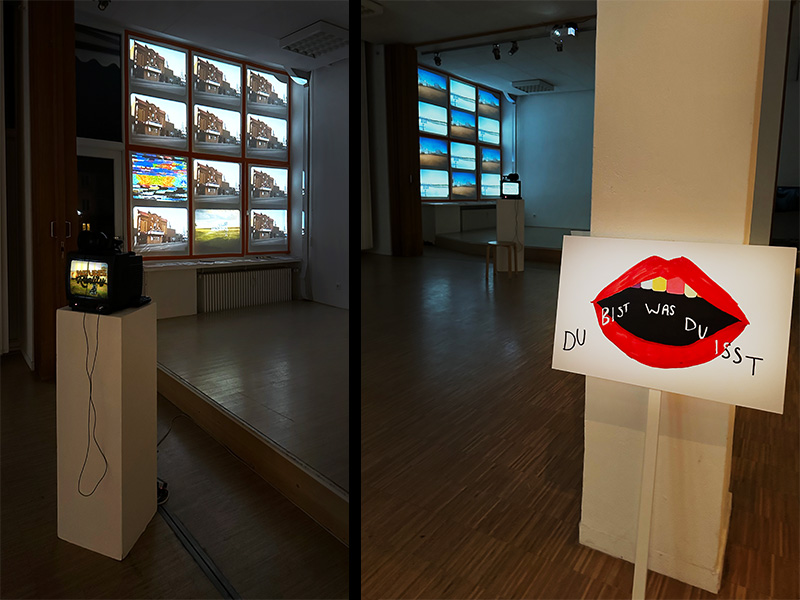
Kargut is in her final year of the Interactive Systems Design program. This program combines courses in art and art history, psychology and computer science and focuses on people’s relationships to technology. In the third year of her program, Kargut enrolled in the Computer Science Professional Internship Program (CSPIP), which offers students the opportunity to gain hands-on experience in the field before they graduate.
When she saw a posting for the position with the shARed spaces unit, she knew the role aligned with her interests exactly.
Nico Trick, a master’s student in the Human-Computer Interaction Lab in the Department of Computer Science, is also part of the development team at shARed spaces, responsible for bringing the students’ artwork to life with animations.
Trick would receive artwork from the German students, animated the images using digital software, and transitioned the images to an appropriate format for the shARed spaces app.
“It was a cool idea in general,” Trick said. “To see kids getting involved in the performance of their art. I think it’s interesting to see the blending between traditional and digital art, especially for kids that have grown up with a lot more technology than the other generations.”
Trick was drawn to working with AR to explore the possible uses of the technology, especially making it more accessible.
“It’s why I’m really excited about this project in particular, (AR is) working to be a tool,” she said. “It’s trying to be this hub, a lot of different art projects and experiences, all in one place.”
Jordan Ripley (BA’22) is a graduate of the interactive systems design program and a member of the development team.
Ripley’s role was to take the animated images and process them through a 3-D modelling program so they appeared in the app properly for audiences to view.
“Because augmented reality is such a new technology,” he added. “There’s still so many little hurdles to get over, so many problems that you encounter that nobody’s had to deal with yet. Or there’s not a lot of documentation about the ways that they’ve been solved.”
He also noted that AR has the potential to make artwork accessible. For example, artwork exclusive to galleries in other parts of the world, such as the Louvre Museum in Paris, France, could be available to view with fewer physical barriers, including distance and crowds of people.
“With augmented reality, you can get as close to you want, see as much detail as is made available to you,” he said. “It removes so many barriers for everyone and makes the experience better for everyone.”
Together, we will undertake the research the world needs. We invite you to join by supporting critical research at USask.
